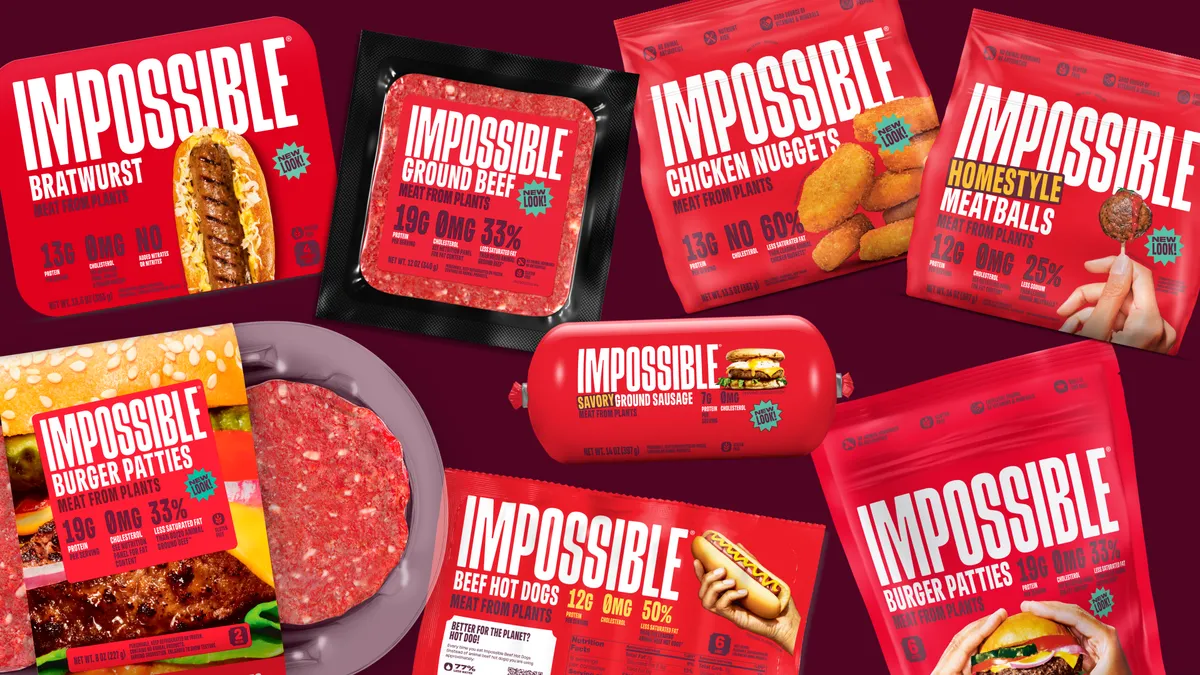The rise of plant-based alternatives has transformed how we approach food, and among these innovations, Impossible Meat stands out as a remarkable example. Consumers worldwide are drawn to the savory flavor and meat-like texture that Impossible Meat delivers without the environmental footprint of traditional livestock farming. This revolutionary product not only addresses ethical concerns related to animal welfare but also tackles some of the most pressing environmental challenges of our time, such as greenhouse gas emissions, land use, and water consumption. As a result, chefs and home cooks alike are embracing this option to craft delicious, satisfying meals that align with evolving dietary preferences. By blending cutting-edge food science with sustainable practices, Impossible Meat has positioned itself at the forefront of a rapidly growing market that promises to reshape our culinary landscape for years to come.
Why Impossible Meat is Revolutionizing the Food Industry
Market trends indicate a significant shift in consumer preferences, and food manufacturers are responding by incorporating more sustainable ingredients. At the forefront of this movement, Impossible Meat has captured the attention of restaurants, retailers, and home cooks alike. Its ability to mimic the taste and appearance of animal-based products has not only satisfied vegan and vegetarian customers but also piqued the interest of meat-eaters seeking healthier options. By offering a familiar sensory experience—complete with the sizzle, aroma, and juiciness of cooked beef—this innovative alternative helps break down barriers between plant-based and traditional diets. Moreover, its introduction has encouraged competitors to invest in research and development, driving further innovation across the entire plant-based sector. The ripple effect of this trend can be seen in the growing number of fast-food chains, casual dining establishments, and grocery stores that now feature plant-based meat alternatives prominently on their menus and shelves, signaling a profound transformation in how we produce and consume protein.
The Science Behind Impossible Meat

Developed through advanced food science techniques, Impossible Meat relies on plant proteins, heme molecules, and a carefully balanced blend of oils and seasonings to achieve its signature taste and texture. The key innovation lies in the use of leghemoglobin—a molecule traditionally found in soy root nodules—to replicate the iron-rich profile and mouthfeel of animal-derived meat. This component, produced via fermentation using genetically engineered yeast, interacts with heat to produce the characteristic aroma of cooking meat, giving plant-based dishes an authentic appeal. In addition, the formulation includes coconut oil and sunflower oil to mimic the fat content and mouth-coating qualities of animal fat, ensuring that every bite delivers the juiciness consumers expect. By combining these elements with a proprietary blend of spices, Impossible Meat has crafted a product that satisfies both the palate and the conscience, demonstrating the power of biotechnology to address dietary and environmental concerns simultaneously.
Cooking with Impossible Meat: Tips and Tricks

For those new to plant-based cooking, experimenting with Impossible Meat can be both exciting and rewarding. When preparing burgers, it is essential to handle the patties gently and avoid over-flipping to maintain juiciness, as the product’s texture is designed to release flavorful juices when cooked properly. Seasoning the product with complementary spices—such as smoked paprika, cumin, or garlic powder—enhances its natural umami profile and adds depth to each bite. Another helpful tip is to preheat your cooking surface thoroughly, whether you’re grilling, pan-frying, or broiling, to achieve a satisfying crust that locks in moisture. For recipes beyond burgers, such as tacos, meatballs, or stir-fries, crumble the product and cook it with onions, peppers, or other aromatics to build layers of flavor. Cooks will find that Impossible Meat adapts well to various sauces and marinades, making it a versatile ingredient in everything from Italian pasta dishes to Asian-inspired noodle bowls. By mastering these techniques, home chefs can elevate their plant-based creations and introduce friends and family to the delicious potential of sustainable ingredients.
Future Prospects

As global demand for protein continues to rise, the scalability of plant-based alternatives becomes crucial. Impossible Meat is expanding its reach by partnering with international distributors and exploring new product lines, including sausages, meatballs, and ready-to-eat meals. This expansion strategy not only broadens consumer access but also encourages local production facilities to adopt more sustainable practices, reducing the carbon footprint associated with long-distance transportation. Furthermore, ongoing research aims to improve the nutritional profile of the product by fortifying it with essential vitamins, minerals, and even novel plant-based nutrients that support overall health. Collaborations with culinary schools and food service providers are also on the rise, ensuring that the next generation of chefs is well-versed in plant-based techniques. Industry analysts predict that breakthroughs in fermentation technology and ingredient sourcing could drive down production costs over the next decade, making these alternatives more competitive with conventional meat. Investment in vertical farming and renewable energy integration may further reduce the environmental toll of large-scale manufacturing. Meanwhile, consumer education campaigns and community outreach programs are helping to demystify plant-based proteins and showcase their versatility in everyday cooking. As these developments unfold, it is clear that this product will continue to play a pivotal role in the global effort to feed a growing population while minimizing environmental impact.
In conclusion, the emergence of plant-based innovations has paved the way for more sustainable and ethical dining choices. By combining scientific ingenuity with culinary versatility, Impossible Meat has proven itself as a viable substitute for traditional animal products. As awareness grows and production scales up, it is likely that even more people will incorporate Impossible Meat into their diets, reducing reliance on conventional meat and contributing to a healthier planet. For many, this breakthrough offers a satisfying culinary experience without compromise.
Beyond individual choices, the widespread adoption of these products could influence agricultural practices and supply chains on a global scale. Governments and policymakers are taking notice, with some regions offering incentives for sustainable food production and research grants aimed at reducing the environmental toll of meat consumption. Educational campaigns and partnerships with nonprofit organizations are also playing a role in raising awareness about the benefits of plant-based alternatives. While challenges remain—such as price parity and consumer education—the continued momentum suggests that plant-based meat alternatives will become increasingly mainstream. Ultimately, the success of this movement depends on collaboration across industry, government, and communities to embrace innovative solutions and build a more sustainable food system for future generations.
